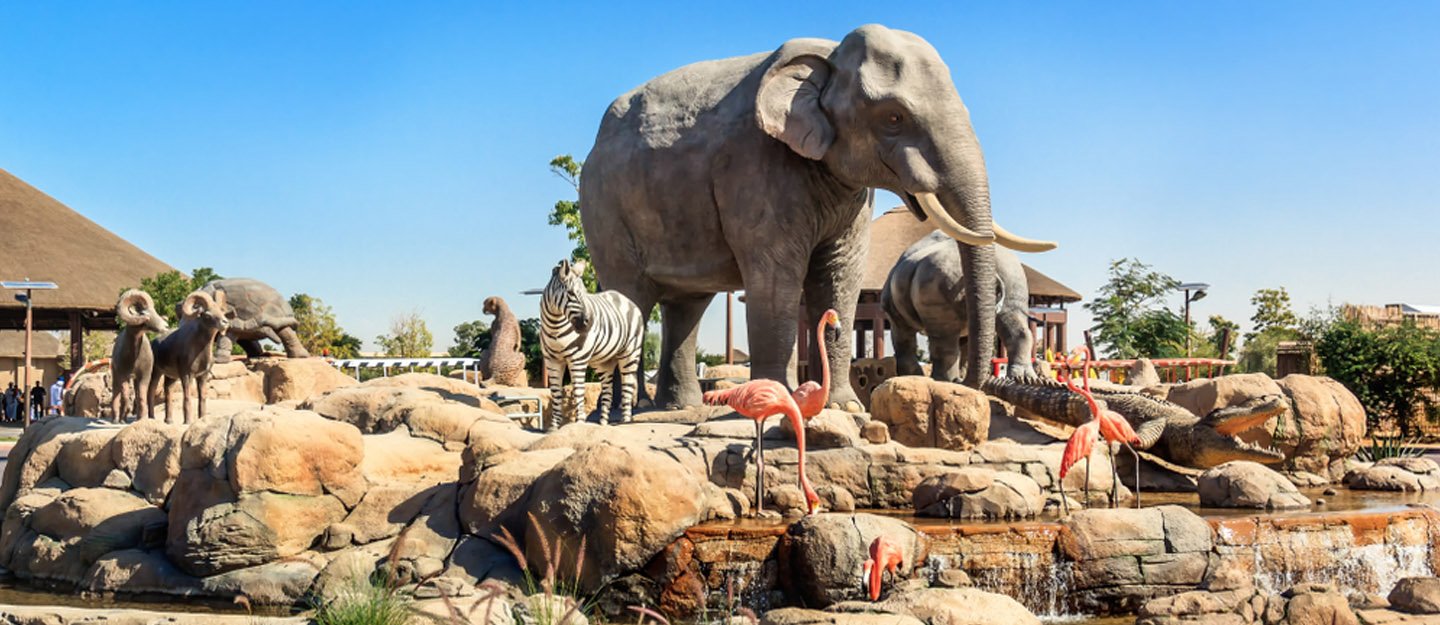Now Reading: Spectacular UAE Astronomical Events to Watch in 2025
-
01
Spectacular UAE Astronomical Events to Watch in 2025
Spectacular UAE Astronomical Events to Watch in 2025
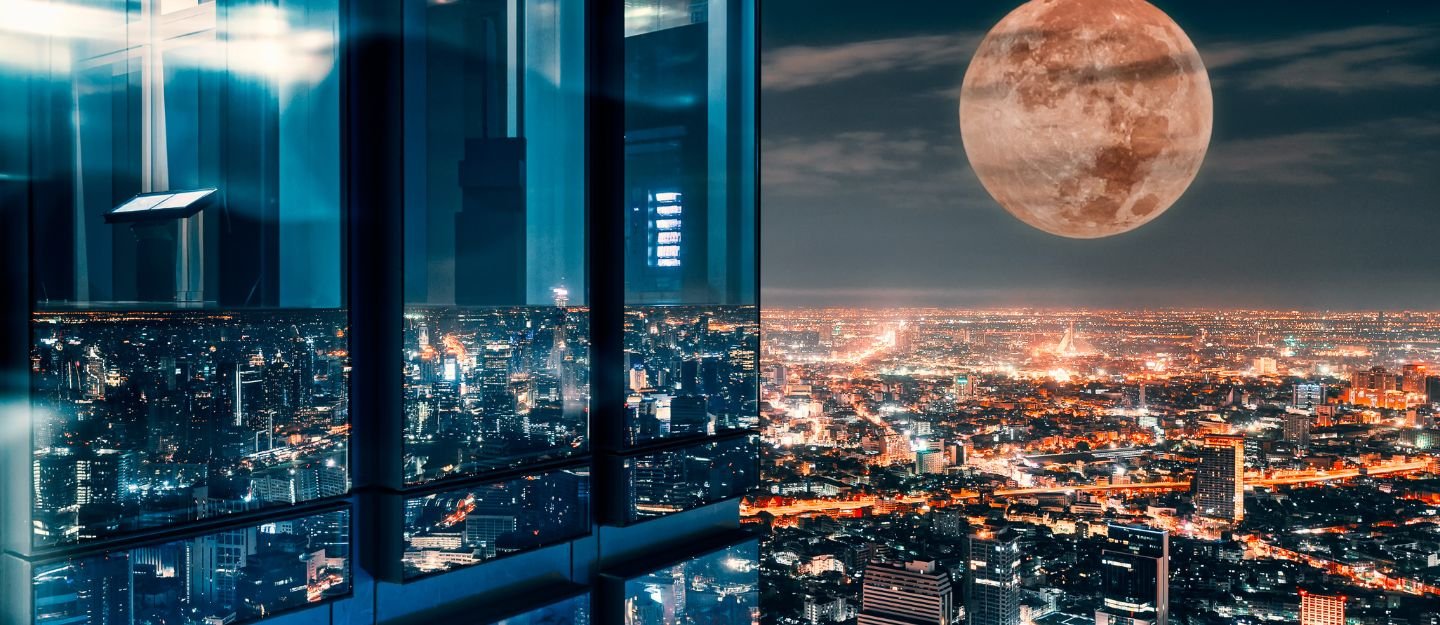
Table of Contents
UAE Astronomical Events Calendar for 2025
From dazzling meteor showers to awe-inspiring eclipses, the UAE sky in 2025 is set to offer an extraordinary cosmic show. Astronomy lovers, photographers, and stargazers alike are in for a celestial treat, as the year promises several remarkable astronomical phenomena visible from different parts of the Emirates. Whether you’re in Dubai, Abu Dhabi, or the desert dunes of Al Qudra, the vast UAE night sky will become your window to the universe.
Here’s your complete guide to the UAE astronomical events calendar for 2025, featuring the most exciting celestial spectacles, tips on viewing them, and what makes each one special.
The Beauty of Stargazing in the UAE
The UAE’s geography and climate make it a perfect destination for astronomy enthusiasts. With clear desert skies, low humidity, and limited light pollution in select areas, the country offers some of the best stargazing opportunities in the region. Places like the Al Quaa Desert in Abu Dhabi, Jebel Jais in Ras Al Khaimah, and Dubai’s Al Qudra Lakes provide excellent vantage points for observing the heavens.
Beyond its natural advantages, the UAE also invests heavily in promoting astronomy. Organizations such as the Dubai Astronomy Group frequently organize public observation events, workshops, and night sky tours, helping locals and tourists alike experience the wonders of space up close.
January 2025 – Quadrantids Meteor Shower
The new year begins with a celestial fireworks display. The Quadrantids Meteor Shower, one of the most active of the year, will peak in early January. On a clear night, observers may witness up to 100 meteors per hour streaking across the sky.
The best time to view this shower will be after midnight, away from city lights. The meteors, known for their bright and colorful streaks, originate from the asteroid 2003 EH1. To make the most of it, lie flat on your back, allow your eyes to adjust to the darkness, and simply enjoy nature’s light show.
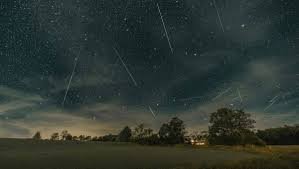
March 2025 – Penumbral Lunar Eclipse
March will bring the first lunar event of the year—a penumbral lunar eclipse, when the Moon passes through the Earth’s faint outer shadow. While not as dramatic as a total eclipse, it still offers an enchanting spectacle as the Moon subtly dims and changes color over several hours.
In the UAE, this phenomenon will be visible late at night, with the best visibility just before dawn. A pair of binoculars or a telescope can enhance the experience, but even the naked eye can capture the serene beauty of this subtle lunar dance.
April 2025 – Lyrid Meteor Shower
Mid-April marks the return of the Lyrid Meteor Shower, one of the oldest known meteor showers in human history. Originating from Comet Thatcher, the Lyrids have been observed for over 2,600 years.
During its peak around April 22–23, stargazers in the UAE can expect around 20 meteors per hour. While the Lyrids are not as frequent as the Perseids or Geminids, they are famous for their fast, bright trails that occasionally leave glowing dust tails behind. For the best viewing, head to a remote desert location, far from city lights.
May 2025 – Eta Aquarids Meteor Shower
The Eta Aquarids Meteor Shower, linked to Halley’s Comet, will illuminate the UAE skies in early May. It’s one of the most radiant meteor showers of the year, producing up to 30 meteors per hour at its peak.
The best time to observe the Eta Aquarids is just before dawn, when the radiant point (near the Aquarius constellation) rises above the horizon. Given the UAE’s clear desert atmosphere, the viewing conditions are typically excellent, offering a great chance to spot the remnants of Halley’s legendary comet.
June 2025 – Saturn’s Opposition
In June, Saturn reaches opposition, meaning the planet will be directly opposite the Sun from Earth’s perspective. This alignment makes Saturn shine at its brightest, visible all night long.
Even a basic telescope will reveal Saturn’s majestic rings and perhaps some of its moons. Astronomy groups in Dubai and Abu Dhabi often host telescope-viewing sessions during planetary oppositions—an experience worth joining if you’ve never seen Saturn in detail before.
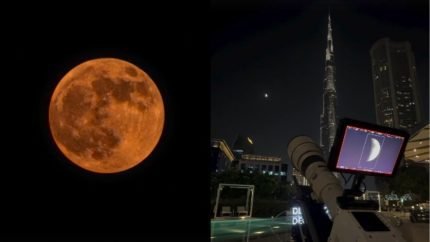
August 2025 – Perseid Meteor Shower
The Perseid Meteor Shower in mid-August is arguably the most anticipated event of the year. Known for its spectacular display of fast, bright meteors, the Perseids originate from Comet Swift-Tuttle and can produce up to 100 meteors per hour under ideal conditions.
The best viewing times will be between midnight and pre-dawn. Desert camping sites near Dubai, Ras Al Khaimah, or Liwa make perfect spots to witness this annual spectacle. Many astronomy enthusiasts plan overnight stays to combine stargazing with desert adventures.
September 2025 – Partial Lunar Eclipse
The Partial Lunar Eclipse in September 2025 will captivate skywatchers across the UAE. During this event, a portion of the Moon will pass through Earth’s shadow, resulting in a noticeable darkening of its surface.
This phenomenon offers a more visible change than a penumbral eclipse, creating an almost magical experience as the Earth’s shadow slowly creeps across the lunar face. It’s a wonderful opportunity for photographers and astronomy enthusiasts to capture stunning time-lapse shots.
October 2025 – Orionid Meteor Shower
The Orionid Meteor Shower, another event linked to Halley’s Comet, will peak around late October. These meteors are known for their speed and brilliance, occasionally producing fireballs that light up the entire sky.
For the best experience, look toward the constellation Orion after midnight. The dark desert skies of the UAE provide the perfect setting to view this annual event. Lying on a blanket under the cool autumn air, watching streaks of light dash across the heavens, is truly unforgettable.
November 2025 – Leonid Meteor Shower
In mid-November, the Leonid Meteor Shower will offer another celestial highlight. Known for producing meteor storms in certain years, the Leonids generally provide a moderate yet consistent display of around 15 meteors per hour.
What makes the Leonids special is their speed—these meteors enter Earth’s atmosphere at around 70 km/s, creating incredibly bright and fast trails. Observing them from the UAE’s wide-open deserts, away from urban light pollution, enhances their visibility dramatically.
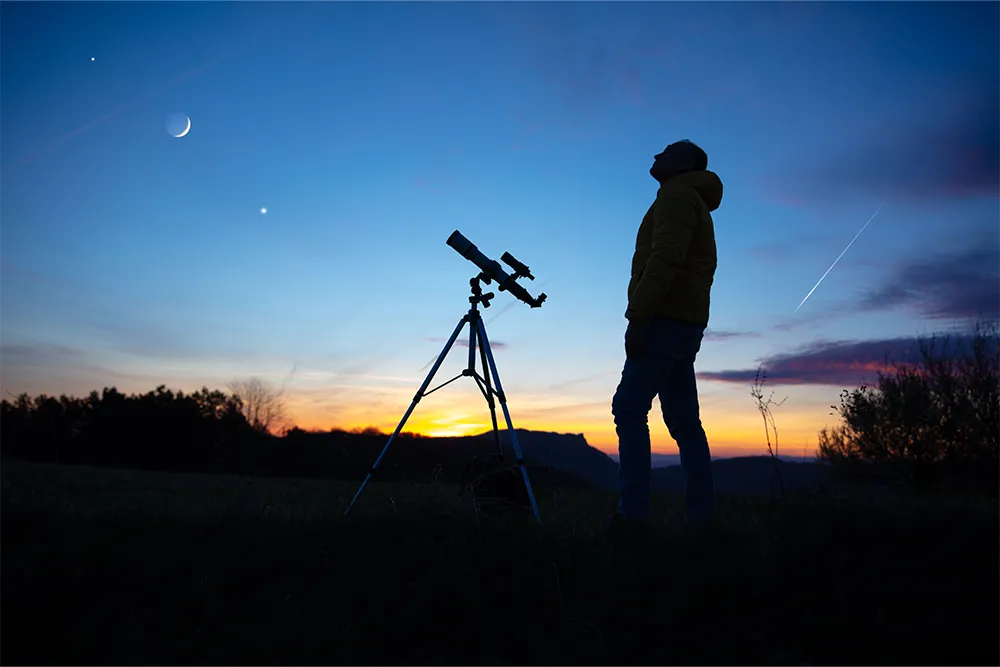
December 2025 – Geminid Meteor Shower and Winter Solstice
The grand finale of the year arrives in December with the Geminid Meteor Shower, one of the most spectacular and reliable meteor showers globally. The Geminids are unique because they originate from an asteroid, 3200 Phaethon, rather than a comet.
At its peak around December 13–14, observers in the UAE can expect up to 120 meteors per hour under dark skies. The combination of cool winter air and crystal-clear desert skies makes this one of the most comfortable and rewarding viewing experiences.
Just days later, the Winter Solstice marks the longest night of the year, providing more hours of darkness to appreciate the wonders above. It’s a perfect time to reflect on the year’s celestial highlights and look forward to another year of cosmic beauty.
Best Stargazing Spots in the UAE
To experience these astronomical events at their best, location matters. The UAE boasts several ideal spots for night sky observation:
- Al Quaa Desert, Abu Dhabi: Known for its low light pollution and panoramic desert horizon.
- Al Qudra Lakes, Dubai: A peaceful retreat close to the city yet far enough to enjoy dark skies.
- Jebel Jais, Ras Al Khaimah: The country’s highest peak offers cool weather and stunning views.
- Mleiha Archaeological Centre, Sharjah: Combines historical intrigue with guided astronomy experiences.
- Liwa Desert, Abu Dhabi: One of the darkest locations in the UAE, ideal for astrophotography.
Tips for Enjoying Astronomical Events
To make the most of your stargazing experience, keep a few simple tips in mind:
- Check weather forecasts – Clear skies are crucial for visibility.
- Avoid city lights – Drive out to remote areas for darker skies.
- Bring essentials – A blanket, water, and snacks make the experience more comfortable.
- Use apps – Astronomy apps like SkyView or Stellarium help identify stars and constellations.
- Be patient – Allow at least 20 minutes for your eyes to adjust to the darkness.
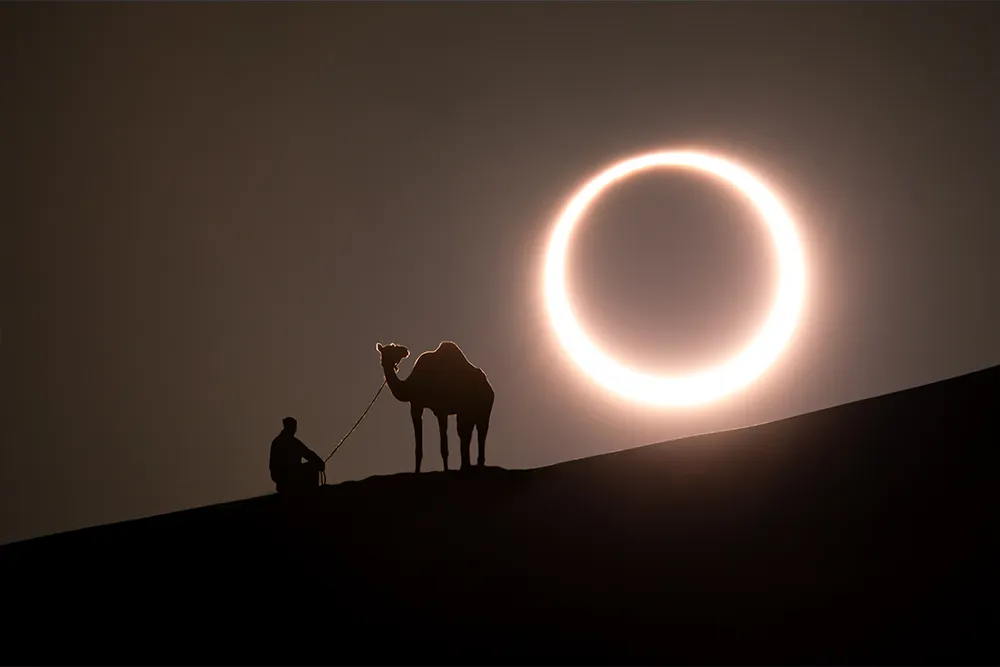
The UAE’s Growing Love for the Cosmos
Astronomy in the UAE isn’t just a hobby—it’s a growing national passion. From school astronomy clubs to the Sharjah Planetarium and Dubai Astronomy Group events, the interest in the night sky is spreading rapidly. The country’s investment in space exploration, highlighted by the Emirates Mars Mission and lunar ambitions, has inspired a new generation to look upward.
These public events bridge science and wonder, connecting people of all ages under one shared sky. Whether you’re a professional astrophotographer or a casual observer, the UAE provides a front-row seat to the grand theater of the cosmos.
Why You Should Mark Your 2025 Sky Calendar
The celestial events of 2025 promise moments of pure wonder. From streaks of fiery meteors to the shadowy dance of eclipses, each occurrence invites us to pause and marvel at the vastness of the universe. The UAE’s unique blend of natural beauty, modern accessibility, and astronomical enthusiasm makes it one of the best places in the world to experience these phenomena.
So, mark your calendar, pack your telescope, and prepare for a year filled with cosmic delights. The stars above the UAE are waiting to tell their stories—one breathtaking event at a time.
Do Follow on Instagram
Read More:- Top 10 Property Brokers in Dubai You Need to Know Now




